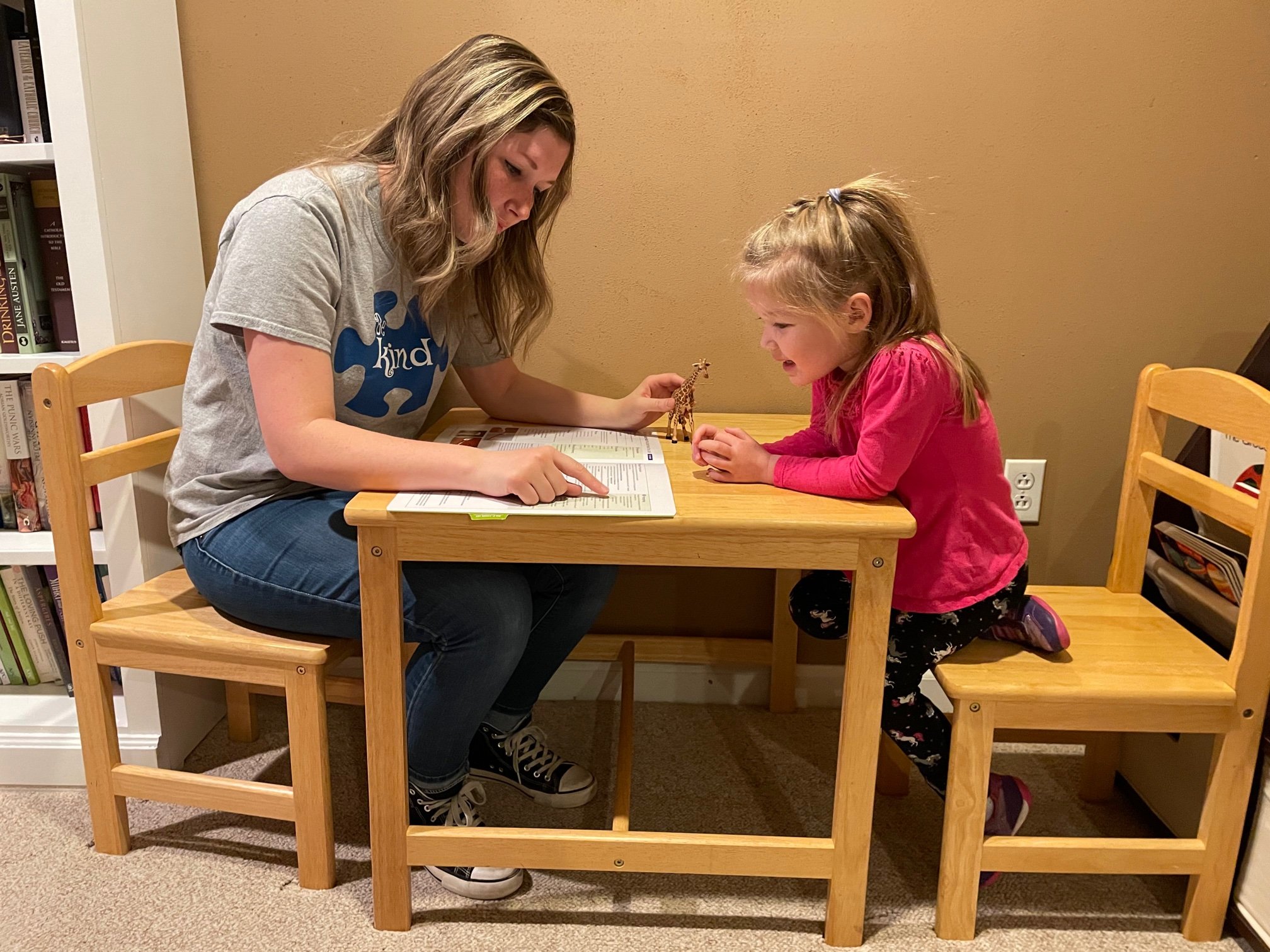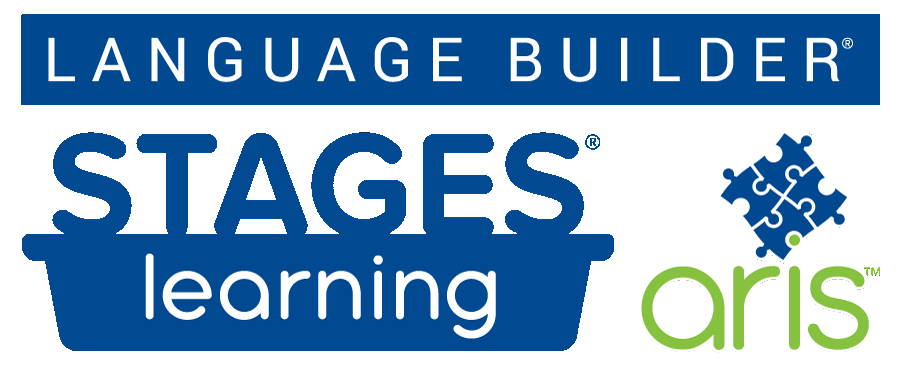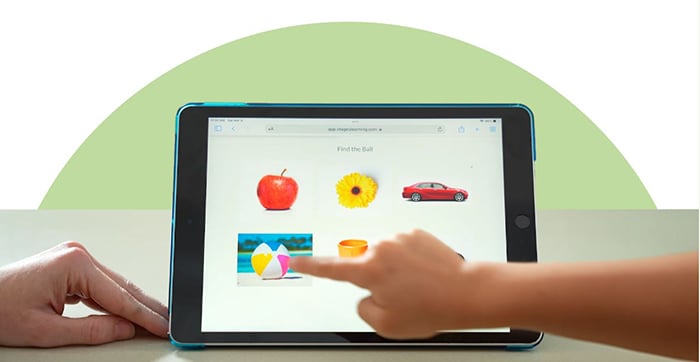
Research-Based Practices for Using Scripted Stories for Learning with 6 Sample Stories
This resource was created as a supplement for the Language Builder: ARIS® Academic Readiness Intervention System complete early autism curriculum, Lesson #119, Independent Play/Work: Scripted Story Play. You can download Lesson 119 for free here and also learn more about the ARIS curriculum.
What Is Scripted Story Play?
Scripted story play is an interactive teaching method that involves acting out stories or scenarios by sequencing play actions with predetermined scripts. This educational technique serves as a foundation for learning symbolic, abstract, and imaginative play skills. Utilizing scripted stories in play can be particularly beneficial for children with autism, as it combines the structure of scripted actions and dialogue with the dynamic nature of play. Once learned, scripted play can be expanded upon, encouraging creativity and interactive pretend play with others. This hands-on approach to learning through play capitalizes on the natural interests of the child while reinforcing important social and communication skills.

Best Practices for Using Scripted Stories
Scripted stories are best when you can include a clear beginning, middle, and end and can model the story with images and objects. They are also most effective when they capture the learner’s attention.
Before creating a scripted story, consider the learner’s interests. Are they really obsessed with vehicles? Did you just take a field trip to a farm? Incorporate environment descriptors, model language, and consider what your child’s perspectives and needs may be to create a scripted story that caters to their specific interests and recent experiences. Keep it short, simple, and straightforward!
Find a play area and have available a selection of toys so that your learner can choose from, and interact with, these toys. Plastic figurines, toy vehicles, play food, costumes, educational carpets with community scenes, and more will get their imaginations working!
Sit across from your child and make sure you have their attention. Lay out picture cards to use as cues for a scripted story. Set out some toys students can use to act out the story.
For example:
-
Lay out the pictures of the school bus, barn, horse, pig, and cow.
-
Gather the toy school bus, horse, pig, and cow.
-
Put the pictures in order.
-
Tell the student a story, giving the instruction, “Let’s pretend…”:
-
“The boy went with his class on a field trip. They rode on the bus.” (Tap the bus picture.)
-
“They went to visit a farm.” (Tap the barn picture.)
-
“He got to ride a horse.” (Tap the horse picture.)
-
“He got to feed a pig.” (Tap the pig picture.)
-
“...and a cow.” (Tap the cow picture.)
-
Allow your child time to explore the toys or picture cards as you tell your scripted story. Prompt as necessary and positively reinforce your child!
At first, present your child with minimal picture cards and toys so they don’t become overwhelmed. Start with a simple three-step story with a clear beginning, middle, and end.
If possible, it is helpful to place one set of toys in front of you and an identical set of toys in front of your child so they can independently follow along. As your child becomes more comfortable following along with the scripted story, challenge them to copy play actions. For example, “The boy rode on a bus on a field trip. Can you push the school bus?”
Practice simple scripted play until your learner demonstrates familiarity. Slowly start to offer a wider choice of toys and more picture cards to incorporate into your script, and let your child begin to take the lead!
Scripted Stories to Use as Models
Enjoy these model-scripted stories. Use these to model your own!

“Vacation”
Step 1.
Lay out picture cards to use as cues for a scripted story about going on a trip. Set out some toys the student can use to act out the story.
-
For example:
-
Lay out the pictures of an airplane, a beach, a pool, etc.
-
Gather some blocks to build the airport and hotel.
-
-
Put the pictures in order and tell the student a story.
-
“The boy went on a trip with his family. They rode in an airplane.” (Tap the picture of the airplane.)
-
“They went to the beach.”
-
“He played in the sand.” (Tap the pictures of the toys.)
-
“He went swimming in a swimming pool.” (Tap the pool and bathing suit pictures.)
-
“He slept in a hotel.” (Tap the block hotel.)
-
“The end.”
-
Step 2.
Use the toys and guide the student to act out the story you told.
-
Use the pictures to cue each point in the story.
-
Give instructions such as, “Let’s pretend we are going on a trip.” Or, choose another appropriate instruction to initiate the play.
-
Wait for the student to act out the story. For example:
-
Use a block as a pretend airplane.
-
Use action figures to represent the family.
-
Use the blocks to build a hotel and airport.
-
-
If the student does not comply, prompt as necessary.
Step 3.
Reinforce the student for acting out the scripted story.
Step 4.
Continue to add additional phrases and actions to the play script until the student is able to engage in scripted play for 5 minutes.
“Train Ride”
Step 1.
Lay out picture cards to use as cues for a scripted story about riding a train. Set out some toys the student can use to act out the story.
-
For example:
-
Lay out the pictures of a train and geographical features such as mountains, rivers, lakes etc.
-
Gather some blocks to build the train track and to use as a train.
-
-
Put the pictures in order and tell the student a story.
-
“The girl went on a train ride. She was happy.” (Tap the picture of the train and the happy girl.)
-
“She went over the mountain.” (Tap the pretend mountain.)
-
“The train went up and down.” (Move the pretend train over the track.)
-
“She saw animals along the way.” (Tap the pictures of the animals.)
-
“She saw grass, and clouds, and lots of nature.” (Tap pictures of grass and clouds.)
-
“She had lots of fun.”
-
Step 2.
Use the toys and guide the student to act out the story you told.
-
Use the pictures to cue each point in the story.
-
Give instructions such as, “Let’s pretend we are going on a train ride.” Or, choose another appropriate instruction to initiate the play.
-
Wait for the student to act out the story. For example:
-
Use a block as a pretend train.
-
Use toy animals to represent the animals they see.
-
Use the blocks to build a train track and mountains.
-
-
If the student does not comply, prompt as necessary.
Step 3.
Reinforce the student for acting out the scripted story.
Step 4.
Continue to add additional phrases and actions to the play script until the student is able to engage in scripted play for 5 minutes.

“Playing Soccer”
Step 1.
Lay out picture cards to use as cues for a scripted story about playing a soccer game. Set out some toys the student can use to act out the story.
-
For example:
-
Lay out the pictures of a soccer ball and kids playing.
-
Gather some blocks to create a mini soccer field.
-
Gather pretend food, emotions cards, and picture cards of a child playing soccer.
-
-
Put the pictures in order and tell the student a story.
-
“The kids went to the park to play soccer. They rode the bus.” (Tap the bus.)
-
“They had fun kicking the ball and scoring goals.” (Tap the pictures of the child playing soccer.)
-
“After the game, they had snacks.” (Tap the food pictures.)
-
Have the student pretend to eat.
-
“The kids had fun and were tired.” (Tap the emotions pictures.)
-
“They rode the bus home.” (Tap the bus.)
-
Step 2.
Use the toys and guide the student to act out the story you told.
-
Use the pictures to cue each point in the story.
-
Give instructions such as, “Let’s pretend we are going to the park to play soccer.” Or, choose another appropriate instruction to initiate the play.
-
Wait for the student to act out the story. For example:
-
Push a toy bus to the pretend field.
-
Use blocks to create soccer goals.
-
Use the toy food to pretend to eat a snack.
-
-
If the student does not comply, prompt as necessary.
Step 3.
Reinforce the student for acting out the scripted story.
Step 4.
Continue to add additional phrases and actions to the play script until the student is able to engage in scripted play for 5 minutes.
“Going to the Zoo”
Step 1.
Lay out picture cards to use as cues for a scripted story about going to the zoo. Set out some toys the student can use to act out the story.
-
For example:
-
Lay out the pictures of the car, lion, giraffe, and birds.
-
Gather the toy lion, giraffe, and birds.
-
-
Put the pictures in order and tell the student a story.
-
“The boy went with his family to the zoo. They rode in their car.” (Tap the car picture.)
-
“They went to visit animals.” (Tap the pictures of the animals.)
-
“He liked the lion.” (Tap the lion picture.)
-
“His sister liked the giraffe.” (Tap the giraffe picture.)
-
“His mom liked the birds the best.” (Tap the bird picture.)
-
“The end.”
-
Step 2.
Use the toys and guide the student to act out the story you told.
-
Use the pictures to cue each point in the story.
-
Give instructions such as, “Let’s pretend we are going to the zoo.” Or, choose another appropriate instruction to initiate the play.
-
Wait for the student to act out the story. For example:
-
Push a toy car over to the animals.
-
Use action figures to represent the family.
-
Use the toy giraffe, lion, and bird to pretend to interact with the animals.
-
-
If the student does not comply, prompt as necessary.
Step 3.
Reinforce the student for acting out the scripted story.
Step 4.
Continue to add additional phrases and actions to the play script until the student is able to engage in scripted play for 5 minutes.

“Going to a Restaurant”
Step 1.
Sit in a chair or on the floor across from the student.
Step 2.
Make sure you have the student’s attention.
Step 3.
Lay out picture cards to use as cues for the scripted story. Set out some toys the student can use to act out the story.
-
For example:
-
Lay out the pictures of the car or van, table, and lunch foods such as sandwiches and fruit.
-
Gather the toy food and cards.
-
Create a table out of blocks.
-
-
Put the pictures in order and tell the student a story.
-
“The boy went to a restaurant for dinner. He rode in the car.” (Tap the car or van picture.)
-
“He sat at a big table.” (Tap the picture of the table and the blocks.)
-
“He ordered some food.” (Tap the pictures of food.)
-
“He ate the food.” (Tap the toy food.)
-
“Then he went home.” (Tap picture of car or van.)
-
“The end.”
-
Step 4.
Use the toys and guide the student to act out the story you told.
-
Use the pictures to cue each point in the story.
-
Give instructions such as, “Let’s pretend we are going to a restaurant.” Or, choose another appropriate instruction to initiate the play.
-
Wait for the student to act out the story. For example:
-
Push the toy car.
-
Build a table from blocks.
-
Use the toy food to pretend eating at the restaurant.
-
-
If the student does not comply, prompt as necessary.
Step 5.
Reinforce the student for acting out the scripted story.
Step 6.
Continue to add additional phrases and actions to the play script until the student is able to engage in scripted play for 5 minutes.

“Going on a Picnic”
Step 1.
Sit in a chair or on the floor across from the student.
Step 2.
Make sure you have the student’s attention.
Step 3.
Lay out picture cards to use as cues for the scripted story. Set out some toys the student can use to act out the story.
For example:
-
Lay out the pictures of the car or van, swing, and lunch foods such as sandwiches and fruit.
-
Gather the toy food and some blocks to create a playground.
-
Put the pictures in order and tell the student a story.
-
“The boy went with his mom for a picnic in the park. They rode in their car.” (Tap the car or van picture.)
-
“They played on the playground.” (Tap the picture of the swings and the blocks.)
-
“They ate some yummy lunch.” (Tap the pretend food and picture of eating.)
-
“They went home in their car.” (Tap car or van picture.)
-
Step 4.
Use the toys and guide the student to act out the story you told.
-
Use the pictures to cue each point in the story.
-
Give instructions such as, “Let’s pretend we are going on a picnic.” Or, choose another appropriate instruction to initiate the play.
-
Wait for the student to act out the story. For example:
-
Push the toy car.
-
Build a playground from blocks.
-
Use the toy food to pretend eating a picnic lunch.
-
-
If the student does not comply, prompt as necessary.
Step 5.
Reinforce the student for acting out the scripted story.
Step 6.
Continue to add additional phrases and actions to the play script until the student is able to engage in scripted play for 5 minutes.
Why Learning to Tell a Story Is a Powerful Learning Experience
Learning to tell a story through play is a powerful learning experience for your child to practice their symbolic, abstract, and imaginative play skills. Storytelling helps children learn about themselves and others, identify emotions, increase listening and attention skills, and practice language skills. Children improve comprehension through scripted stories as they immerse themselves in the visual, verbal, and physical cues involved. Children are able to use the images and objects presented to them to visualize scenarios. Storytelling can spark your children to ask questions and think more deeply about the situation at hand. Scripted stories reflect your child's personality, preferences, and perspectives so children are able to immerse themselves in the narrative.
The following are links to resources you can use for these scripted stories:
This article is based on the following research and online resources:
https://challengingbehavior.cbcs.usf.edu/docs/ScriptedStories_Home.pdf
http://www.eccpct.com/Customer-Content/www/CMS/files/Scripted-Stories.pdf
https://challengingbehavior.cbcs.usf.edu/Implementation/Program/strategies.html
https://academicpartnerships.uta.edu/articles/education/using-storytelling-to-improve-literacy.aspx
http://esestherapiestoolbox.com.au/social-scripts.html
https://www.schoolbag.edu.sg/story/three-benefits-of-telling-stories-to-children





